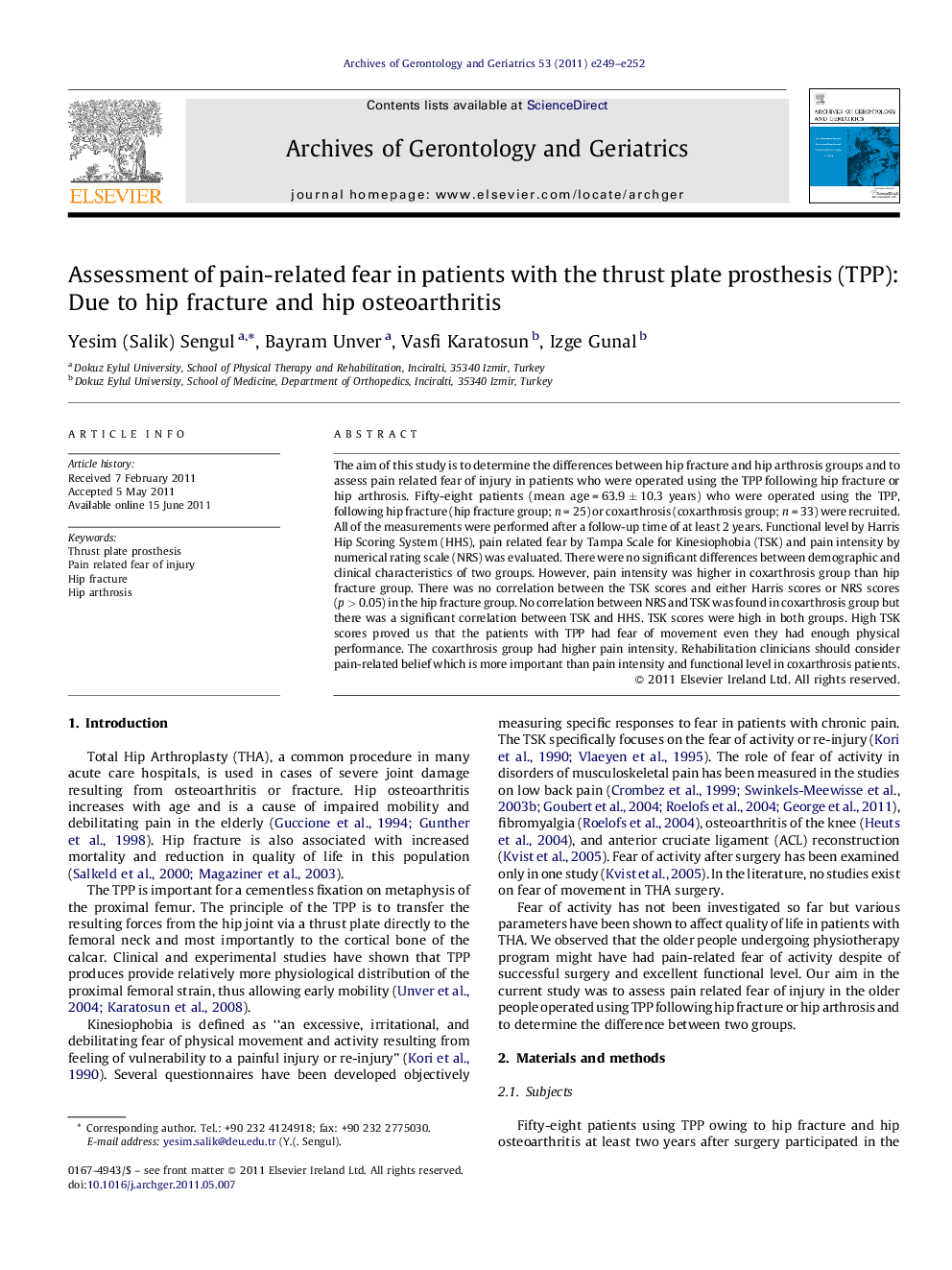| کد مقاله | کد نشریه | سال انتشار | مقاله انگلیسی | نسخه تمام متن |
|---|---|---|---|---|
| 1903529 | 1534453 | 2011 | 4 صفحه PDF | دانلود رایگان |

The aim of this study is to determine the differences between hip fracture and hip arthrosis groups and to assess pain related fear of injury in patients who were operated using the TPP following hip fracture or hip arthrosis. Fifty-eight patients (mean age = 63.9 ± 10.3 years) who were operated using the TPP, following hip fracture (hip fracture group; n = 25) or coxarthrosis (coxarthrosis group; n = 33) were recruited. All of the measurements were performed after a follow-up time of at least 2 years. Functional level by Harris Hip Scoring System (HHS), pain related fear by Tampa Scale for Kinesiophobia (TSK) and pain intensity by numerical rating scale (NRS) was evaluated. There were no significant differences between demographic and clinical characteristics of two groups. However, pain intensity was higher in coxarthrosis group than hip fracture group. There was no correlation between the TSK scores and either Harris scores or NRS scores (p > 0.05) in the hip fracture group. No correlation between NRS and TSK was found in coxarthrosis group but there was a significant correlation between TSK and HHS. TSK scores were high in both groups. High TSK scores proved us that the patients with TPP had fear of movement even they had enough physical performance. The coxarthrosis group had higher pain intensity. Rehabilitation clinicians should consider pain-related belief which is more important than pain intensity and functional level in coxarthrosis patients.
Journal: Archives of Gerontology and Geriatrics - Volume 53, Issue 2, September–October 2011, Pages e249–e252